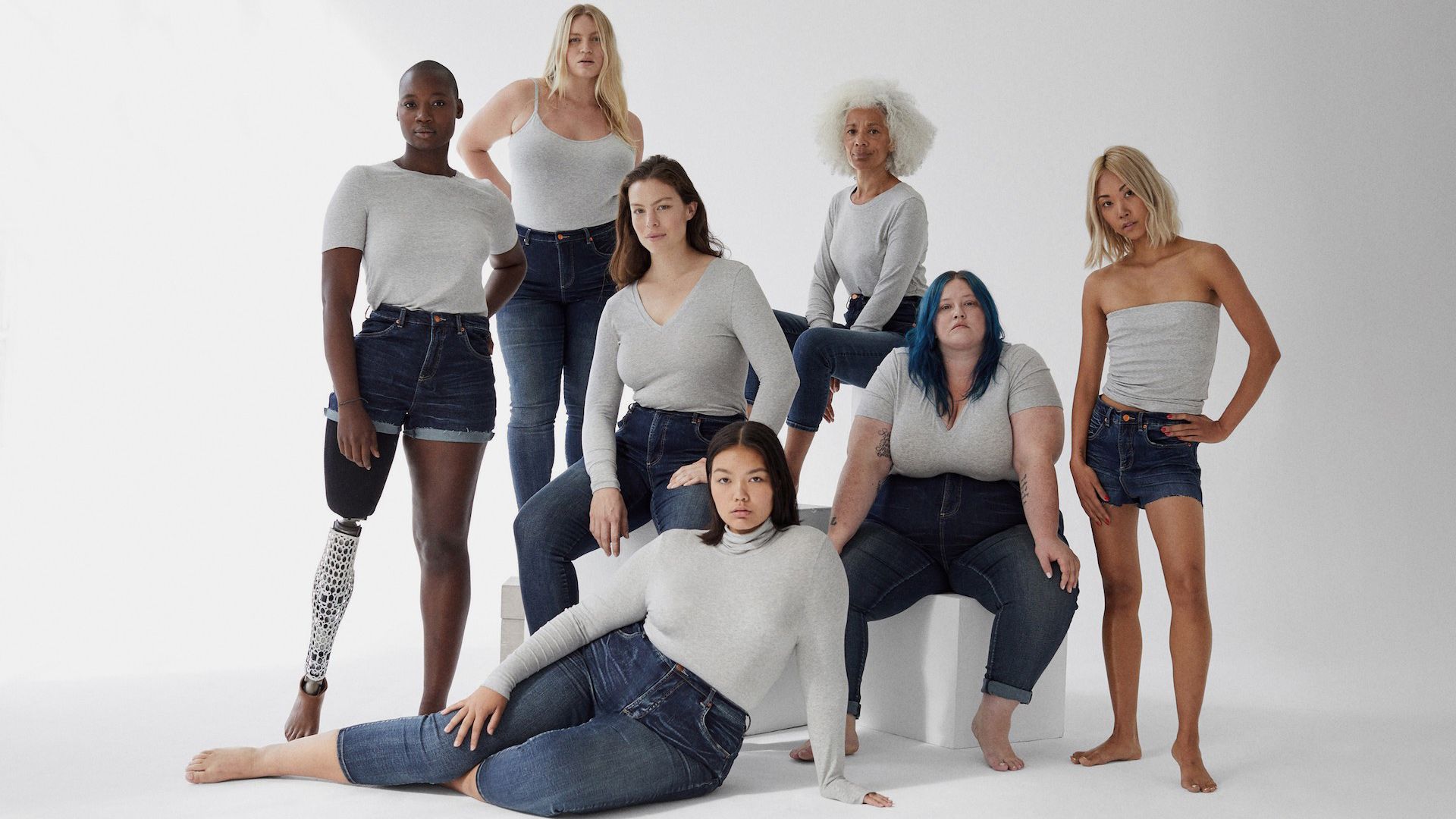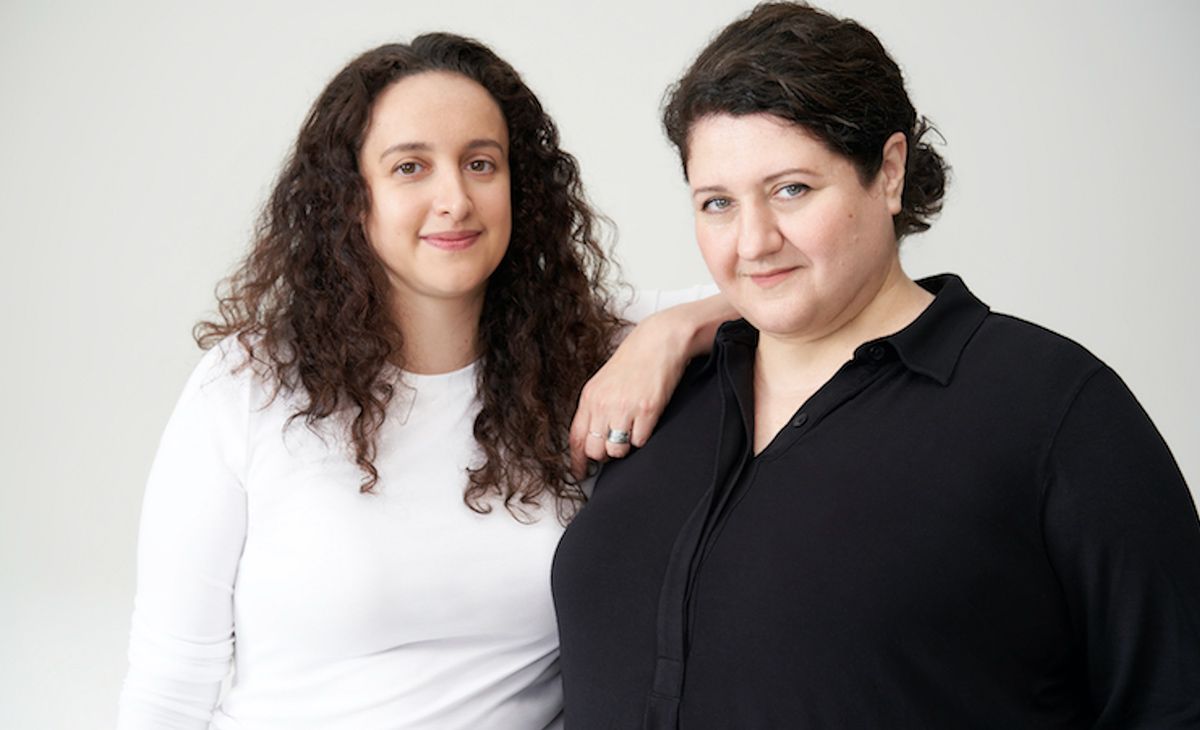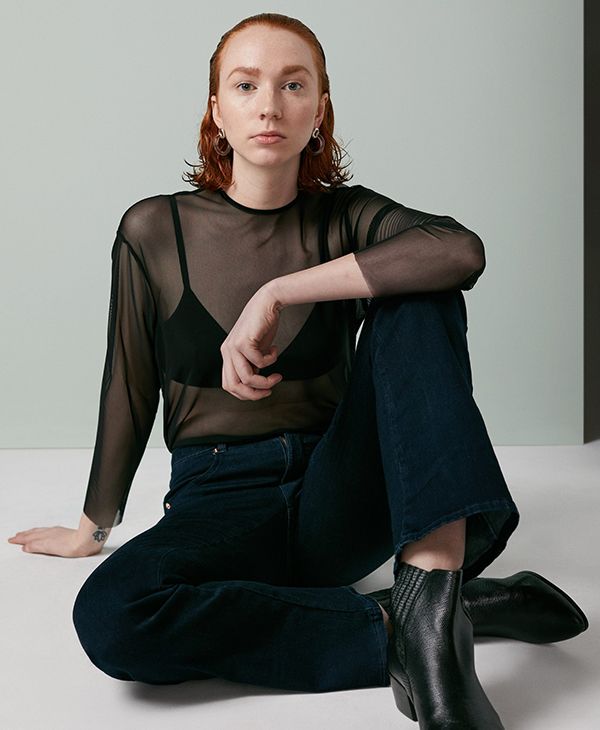UNIVERSAL STANDARD: FINALLY, FASHION DESIGNED FOR ALL BODY TYPES

Printemps.com: Universal Standard seems to focus on three aspects: Inclusivity, aesthetic and functionality. Why have you put these values at the heart of your approach?
Alexandra Waldman: For us, inclusivity is a way to speak to all women, with no exceptions or discrimination. We wanted to refocus the debate and address the problems that women face when they get dressed. With Polina [Veksler, her co-founder], we wanted to redefine the "new normal." Whether you're a size 8 or 38, you should be able to walk into any store or visit any website and only ask yourself one question: "Do I like this?" And not: "Does this come in my size?" In our view, it was essential to remove the issue of size from the conversation, which is why the practical aspect of the clothing is essential. To get rid of segregation based on body type, we had to change the entire measurement system and offer pieces in all sizes. As for the aesthetic, that's the whole purpose of our project. The aim is to feel good, beautiful, and confident.
What career did you have before becoming an entrepreneur? And what prompted you to create Universal Standard with Polina Veksler?
I started out as a fashion journalist with a focus on the financial and economic side (while Polina worked in investment banking). I covered some beautiful fashion shows, but as a bigger woman, I knew that this fashion wasn't for me. I wanted to be part of it, actively participate in this culture, but I couldn't access the world that was being revealed before me.
After our respective experiences in different countries, Polina and I met in New York. We had planned to go to an event but a few days before, I called her saying that I had nothing to wear. She laughed at me and told me to meet her on 5th Avenue so that she could find me an outfit. My response astounded her: There are absolutely no stores on 5th Avenue that would stock anything in my size. Polina realised the problem and we began to discuss what was happening in the fashion world, what could be created, improved, changed. We started off with a major finding: 150 million American women—that's 68% of them—wear a size 46 (UK 18) or bigger. Do you realise the size of that market, which is totally ignored by most brands? For such a capitalist country, this seems totally incomprehensible, and proves the significant damage caused by the industry. So we took the risk to set an example.

Founders Polina Veksler and Alexandra Waldman
So you created your brand because people who wear larger sizes wanted access to quality fashion, and labels and multi-brands were not providing it.
Our aim from the start was not to respond to women's needs but to bring about real change in the general perception of fashion. Because the system that we are living in does not reflect reality. The girls on TV or on the covers of magazines are unattainable archetypes. Living in this parallel universe has been awful for our mental and physical health. So it was time for a brand to take on the role of spokesperson in a whole other way.
What was the biggest challenge that you had to face when you first launched?
Our main challenge turned out to be our biggest victory. We knew absolutely nothing—we didn't know how to produce clothes or even where to do it—but fortunately, we did not rely on the rules that were already in place. Normally, factories use a mathematical formula to increase or reduce the size of a piece of clothing. That's a very quick way of doing it, but it doesn't work for very large and very small sizes. We decided to do away with that practice in favour of micrograding, which analyses how the change in size affects how the clothes sit on the model. We had to find a woman for each size and adjust the pieces on each of them. This took a lot of time and cost a lot of money, but it was worth it.
"EVERYTHING HAS TO BE APPROACHED IN A DIFFERENT WAY, WHETHER YOU'RE MAKING LARGER-SIZED CLOTHING OR PIECES ADAPTED FOR DISABLED PEOPLE. THE MORE WE OPEN THE DOORS, THE GREATER THE CREATIVITY AND THE FIELD OF POSSIBILITIES. THAT'S FASHION."
To what extent do you think fashion can be a tool for empowerment?
Fashion is an armour against the world; our style is what defines us against others. I felt like I couldn't express my personality, I didn't have this power. It was so frustrating. With Universal Standard, the idea was to talk about fashion and only about fashion. No sizes, no discrimination, no judgement. What I'm going to say might seem controversial, but we're not a body-positive brand. We just make clothes for women. The body is a very personal adventure and I don't think that a label should monetise that. Let people make their own journey.
Universal Standard is a very straightforward name: It calls for diversity, inclusivity... In your view, what role should fashion play in these areas?
When we opened our showroom, we became aware of certain systemic behaviour, particularly linked to denial. A woman who wore a size 26 is sometimes persuaded to wear an 18. Cultural pressure had forced her to see herself as something she wasn't. No-one sees the size on the label, and yet sometimes I buy a smaller size just to convince myself that I can fit into it or that the next diet will work. How can we stop this constant hassle that we impose on ourselves?
I believe that we should be more creative in fashion. The inclusion of diverse bodies, backgrounds, sexual orientations and ages is just an accurate representation of the world we live in. And this commitment must be consistent. We can't offer larger sizes online, and then not include them in store. Everything has to be approached in a different way, whether you're making larger-sized clothing or pieces adapted for disabled people. The more we open the doors, the greater the creativity and the field of possibilities. That's what fashion is all about.
In 2015, you were one of the pioneers of plus-sized fashion. Do you think that the industry has made progress since then?
It has changed a lot, but not enough. We paved the way and now several brands approach us to guide them in this new direction. Adidas, Rodarte and J. Crew—to name a few—trusted us and allowed us to make this new standard more accessible.
How did the collaboration with Rodarte come about?
I had made a list of brands that we could do incredible things with, and Rodarte was in the top three. We got in touch with them and they immediately agreed to work with us. 100% of the designs were made by them—we could never create this type of style. The Mulleavy sisters are true artists.

Universal Standard also works with two feminist organisations to further their causes. What does your collaboration involve?
We have worked with Dress for Success and First Step [who both support women returning to the workforce] for three years. Through our Fit Liberty programme, we are committed to donating clothes that our customers return to us. So far, we have donated over 10,000 items of clothing to women in need. In addition to being a feminist cause, it also aligned with our environmental commitment.
In an Instagram post, you challenged the relevance of the concept of "plus-size fashion." Why does this bother you?
Addressing "plus-size" as a category is an out-dated approach. I think we have a real problem with segregation. Why show contempt for over 70% of the population? The ultimate goal is to permanently get rid of these terms. Fashion of the future will allow diversity, and I'm proud that Universal Standard is part of it. The difficulty in accessing clothes affects many women, as well as men. We hope to expand to this category, and perhaps have one in-between, too.
Does that mean that you're thinking of creating a unisex line?
Yes, absolutely. But we're a very young brand and we have to pick our battles. We have this community in mind, like older people and people with reduced mobility. Constantly representing members of our society and acknowledging their existence—that's my dream.